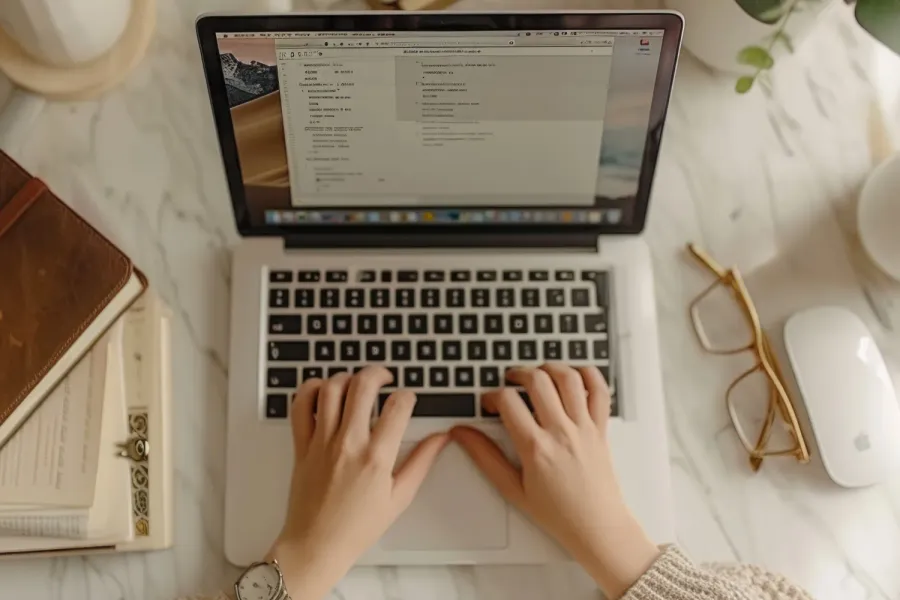
Letter writing is often considered a lost art form, but it hasn't been lost — it has simply evolved. You can write an email with the same care and consideration as you would a letter. And doing so makes a difference.
In this article, you'll learn what makes for a compelling opener and the five best ways to start an email.
What determines the best way to start?
It doesn't matter if you're writing to your grandma, boss, or a potential client or customer — you should craft your opener for the person who is going to read it.
That means getting to know your audience. With a personal or work email to a single person, you can easily intuit what's appropriate based on the recipient and how well you know them. If you're running an email marketing campaign, this can be a bit more complicated and require some data analysis.
The second thing to consider when starting an email is the context. You'd write to the same colleague differently in different situations — a birthday note demands a different tone than an urgent request.
What are the best ways to start an email?
With that in mind, consider the suggestions below as a checklist. Each one can improve the impact of your emails.
1. Striking subject line
An email really starts before it starts — with the subject line. Especially if you're sending a marketing email or are reaching out to someone you've never met.
Keep your subject line simple, clear, and impactful. It should convey what you're writing about and why. Ideally, your subject line will have a call to action.
If the recipient is someone you know well, you have more leeway with the subject line. If it's a professional introduction via a colleague, you'll want to make sure your relationship with the referrer is made clear.
Finally, if you're sending marketing communications, your subject line should give the reader the gist of your message so they're tempted to click.
2. Appropriate greeting
You got them to open the email. Now it's time to say hello — but it's not always as simple as that. Different greetings denote different levels of formality.
Get too familiar too fast, and you'll make people uncomfortable. Appear too formal, and you might alienate someone.
It's all about balance. If you're writing to someone you don't know in a more formal context, "dear" is the classic option, but it can come across as old-fashioned. "Hello" is more casual and modern while still fairly professional.
Conversely, "hi" gives a more casual vibe and is best reserved for peers and people you know well.
3. Address them correctly
After you've decided on your greeting, you need to address your recipient directly. If you're writing a formal email or addressing someone especially senior to you, you'll want to use an honorific like Mr., Mrs., Ms., or Miss.
When in doubt, don't just double-check — triple-check. Something as small as addressing someone as Ms. rather than Dr. because you didn't notice the three letters after their name can start things off on the wrong foot.
If you're writing to a peer, you're better off sticking to their first name unless they've asked you to do otherwise. Double-check how to spell any names you're using, especially if they're right at the start of your email.
Even if it's someone you've written to a million times before, make it a habit to review what you write before you send it.
4. Succinct small talk
We're not suggesting that you start every email by talking about the weather. But it's useful to remember that you're initiating a conversation, even if you're writing a professional email.
Rapport matters. In email form, this can be as simple and succinct as asking how the other person is doing or saying you hope they enjoyed the weekend. The more relevant, the better — if you have an existing relationship, you could comment on something you previously shared.
Whatever you choose, keep it brief.
5. Clearly defined purpose
You've gotten their interest, greeted them, addressed them correctly, and checked in. Now, it's time to get to the heart of your email.
Clearly state why you're emailing the recipient and what you want to happen. A clearly articulated purpose makes it easy for your reader to process and respond. You might include suggested steps, dates, or deliverables.
Once you've directly and succinctly explained the purpose of your message, you can end your email effectively.
Wrapping up
Great emails can be as compelling as great letters. With the tips in this guide, you can open your emails well and land them with impact.
Superhuman is the most productive email app ever made. Reply two days sooner and save more than four hours every single week.




